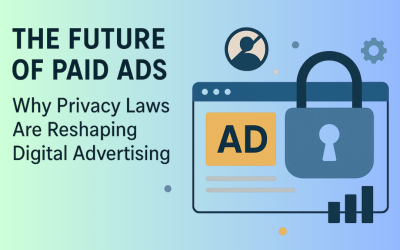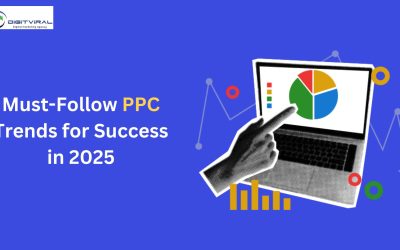How Much Should You Spend in Google Ads? Complete Guide to PPC Costs
Google Ads is one of the most powerful tools to boost your business’s visibility, drive traffic, and generate conversions. But when it comes to Pay-Per-Click (PPC) advertising, one question is always top of mind: How much should I spend?
Whether you’re a small business or a seasoned marketer, determining the right Google Ads budget is critical to your campaign’s success. This guide will help you understand the factors influencing Google Ads costs and how to set the right budget to maximize your ROI.
Table of Content
- Why Google Ads?
- What Influences Google Ads Costs?
- So, How Much Should You Spend on Google Ads?
- Maximizing ROI: Tips for Managing Google Ads Costs
- Final Thoughts: Is There a Magic Number?
- Key Takeaways:
Why Google Ads?
Before diving into costs, let’s take a quick look at why Google Ads is such a valuable platform. With over 8.5 billion searches happening daily on Google, there’s no doubt your target audience is on the platform. Google Ads allows you to:
- Reach a broad audience: Be visible when potential customers are actively searching for products or services like yours.
- Pay only for results: With PPC, you only pay when someone clicks on your ad.
- Measure performance: Google Ads offers detailed reporting so you can track and optimize your campaigns for better results.
What Influences Google Ads Costs?
Before we define a budget, it’s essential to understand the factors that affect how much you’ll spend on Google Ads. The following factors play a significant role:
1. Industry and Competition
Some industries are naturally more competitive on Google Ads, which drives up the cost-per-click (CPC). For example, industries like insurance, law, and finance tend to have higher CPCs due to the fierce competition for leads.
2. Keywords
Your choice of keywords can dramatically influence your cost. High-demand keywords will cost more because more advertisers are bidding on them. You can lower costs by using long-tail keywords—more specific phrases that have lower competition but attract a highly relevant audience.
3. Quality Score
Google’s Quality Score is a measure of how relevant your ads, keywords, and landing pages are to the user. A higher Quality Score leads to lower CPCs, making your ad spend more efficient. To improve your Quality Score, focus on creating highly relevant and engaging ads that match the intent behind the search query.
4. Geography
The location of your target audience will also impact costs. Some regions or countries have higher CPCs due to local competition. For example, targeting major cities like New York or London might be more expensive compared to less competitive areas.
5. Ad Position
Where your ad appears on the search results page affects the cost. Ads in the top positions (usually 1-3) tend to cost more, but they also generate the highest click-through rates (CTR). While it’s tempting to aim for the top spot, it’s essential to balance cost with visibility.
So, How Much Should You Spend on Google Ads?
Now that we’ve covered the factors influencing costs, it’s time to answer the big question: How much should you budget for Google Ads?
1. Start with a Test Budget
If you’re new to Google Ads, it’s wise to start with a test budget. A good rule of thumb is to allocate $500 to $1,000 for your first month. This allows you to gather enough data on which keywords and ad strategies work best for your business without breaking the bank.
2. Define Your Goals
Your spending should align with your business goals. Are you looking to drive sales, generate leads, or increase brand awareness? Knowing your goals helps set an appropriate budget. For example:
- Lead Generation: If your goal is to generate 20 leads per month and your average cost per lead (CPL) is $50, then you should budget $1,000 per month.
- E-commerce Sales: If you aim to generate $10,000 in sales with a 10% conversion rate and each sale requires 100 clicks at a $1 CPC, you would need a budget of $1,000 for the month.
3. Factor in Conversion Rates
Your conversion rate—the percentage of clicks that turn into leads or sales—also impacts how much you should spend. The higher your conversion rate, the more you can afford to spend per click. Aim for an average conversion rate of 2-5% for most industries, but adjust based on your business performance.
4. Calculate Customer Lifetime Value (CLV)
Knowing the lifetime value of a customer helps you determine how much you can reasonably spend to acquire them. For example, if your average customer spends $1,000 over their lifetime with your business, it makes sense to invest $100-$200 per acquisition.
5. Set Daily and Monthly Budgets
Once you have a rough estimate, divide your total monthly budget into daily caps to ensure you don’t overspend. For example, if you have a $1,000 monthly budget, set a daily budget of about $33.
Maximizing ROI: Tips for Managing Google Ads Costs
Now that you’ve set a budget, how do you ensure you’re getting the most bang for your buck? Here are a few tips to help you maximize ROI:
1. Leverage Smart Bidding
Google’s Smart Bidding feature uses machine learning to optimize your bids for conversions. This can help you maximize results without constantly adjusting your bids manually.
2. Use Negative Keywords
Negative keywords prevent your ad from showing up in irrelevant searches, saving you money. For instance, if you’re selling luxury watches, you may want to exclude keywords like “cheap watches.”
3. Optimize Landing Pages
Even the best ad campaigns can fall flat if your landing page isn’t optimized for conversions. Ensure that your landing pages are fast, mobile-friendly, and have clear calls-to-action.
4. Experiment with Ad Formats
Google Ads offers a variety of formats, including text ads, display ads, shopping ads, and video ads. Experimenting with different formats can help you discover what works best for your audience.
5. Review and Refine Regularly
PPC is not a set-it-and-forget-it strategy. Regularly review your campaign performance, refine your keywords, and adjust your bids to improve performance over time.
Final Thoughts: Is There a Magic Number?
There’s no one-size-fits-all answer to how much you should spend on Google Ads. Your budget should be driven by your business goals, competition, and how much you’re willing to invest for a return. By starting with a test budget, optimizing your campaigns, and keeping an eye on performance, you can find the perfect balance that works for your business.
If you’re unsure where to begin, we can help. Contact us today for a personalized consultation to find the right Google Ads strategy for your business.
With the right budget and strategy, Google Ads can be a game-changer for your business. Now that you know how to determine your ad spend, it’s time to take action and start reaping the rewards of a well-optimized PPC campaign.
Key Takeaways:
- Google Ads costs are influenced by factors like industry competition, keyword selection, and Quality Score.
- Start with a test budget of $500-$1,000 to gather data.
- Align your budget with your goals, such as lead generation or sales.
- Use Smart Bidding, negative keywords, and optimize landing pages to maximize ROI.
- Regularly review and refine your campaigns for continuous improvement.



